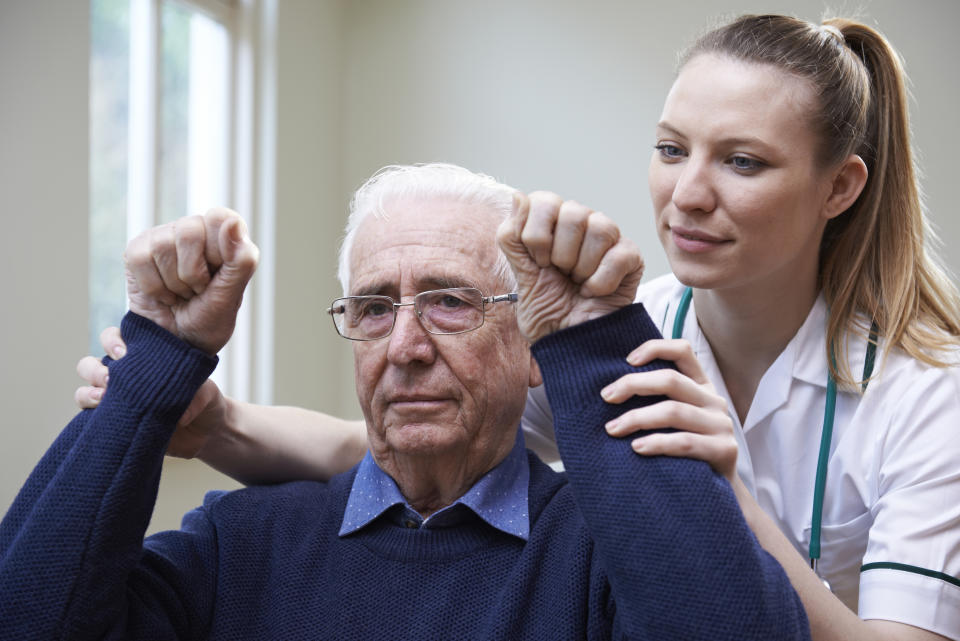Detecting strokes: Here's what you need to know

Luke Perry has died after suffering a “massive stroke.”
According to reports, the 52-year-old “Riverdale” actor and “Beverly Hills 90210” alum died just days after paramedics were called to his home in Sherman Oaks, Calif.
Perry died while surrounded by his family and friends, including his 21-year-old son Jack, 18-year-old daughter Sophie and fiancé Wendy Madison Bauer, at St. Joseph’s Hospital in Burbank, Calif.
While the details surrounding his passing are still unknown, the news has brought heightened awareness to the signs, symptoms and complications of strokes.
Each year, approximately 140,000 people die from suffering a stroke in the United States, making it the fifth leading cause of death for Americans.
ALSO SEE: School district uses new dress code to keep students from vaping
What is a stroke?
According to the Centre for Disease Control and Prevention (CDC), strokes occur when blood supply to the brain becomes blocked by either a clot (ischemic stroke) or when blood vessels in the brain burst (hemorrhagic stroke).

Known as “brain attacks,” people can also suffer a transient ischemic attack (TIA) or “mini strokes.” These short blockages of blood flow to the brain typically last for no more than five-minutes, but are a warning sign of future strokes.
The lack of blood flow and oxygen to the brain during a stroke can result in permanent disability or death, making it critical to detect and treat as soon as possible.
ALSO SEE: Jack Osbourne explains why Selma Blair speaking out about her MS diagnosis is so important
What are the major symptoms of a stroke?
The American Stroke Association advises people to remember the acronym F.A.S.T:
F- Facial drooping or numbness. If a person experiences facial weakness or numbing, it can be detected by asking the person to smile and looking for any unevenness.
A- Arm weakness or numbness. A person suffering a stroke may feel a general sense of weakness or numbness in the arms. Ask the person to raise both of their arms, to spot any differences.
S- Slurred speech. During a stroke, a person may slur their speech or find it difficult to speak. Words can sound like gibberish or speech may be slowed. Ask a person to repeat a sentence several times and call for medical treatment, even if their speech suddenly returns to normal.
T- Time to call 911. Call for medical attention immediately if a person experiences one or several of the major stroke symptoms.

Other minor stroke symptoms
Aside from the symptoms in F.A.S.T, a person having a stroke may experience sudden vision problems, have difficulty walking or understanding conversations. Severe headache, dizziness, loss of balance or coordination are all signs that a person may be having a stroke, and should receive medical attention immediately.
ALSO SEE: I may look ‘fine,’ but I’m dealing with depression and anxiety — the gift that keeps on taking
Who is at risk?
While they can occur to anyone at any age, there are several factors that can increase a persons risk for having a stroke. People who smoke or drink alcohol, live sedentary lifestyles, have high cholesterol, blood pressure or diabetes are all at a greater risk of suffering a stroke.
Maintaining a healthy weight and remaining physically active can help prevent your chances of having a stroke.
Let us know what you think by commenting below and tweeting @YahooStyleCA!
Follow us on Twitter and Instagram.
Check out Yahoo Canada’s podcast, Make It Reign — our hot takes on all things royals in a non-stuffy way — on Apple Podcasts and Google Podcasts.


